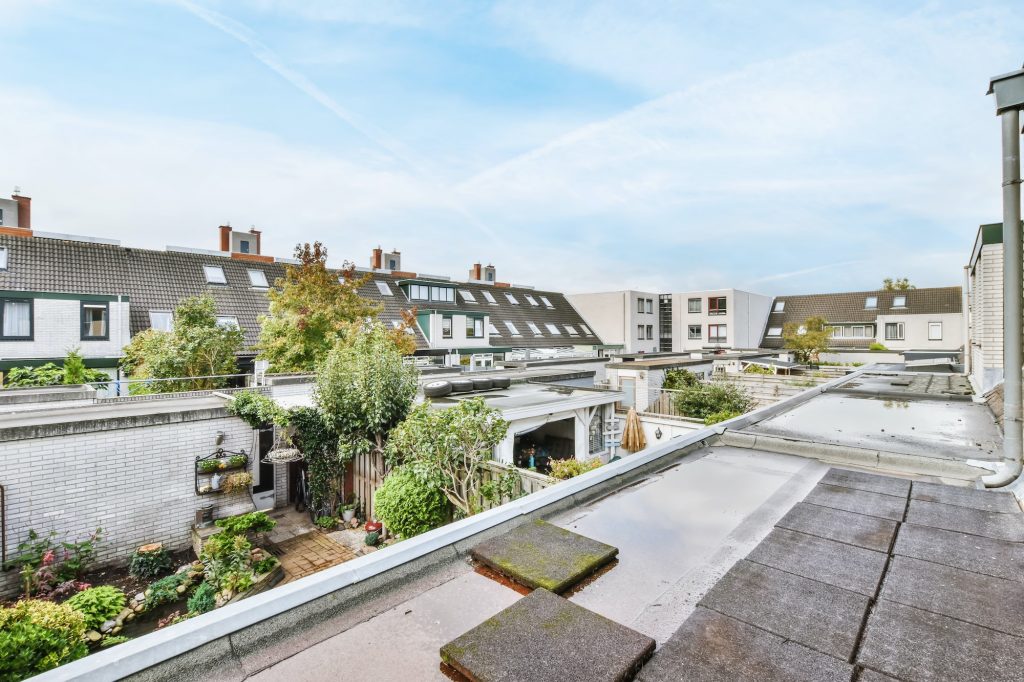A flat roofing system is a type of roofing that is characterized by its flat or nearly flat surface. This type of roofing has been used for thousands of years and has evolved to include a variety of materials and methods of construction. This article aims to provide an overview of the pros and cons of flat roofing systems and help building owners and contractors make informed decisions about their roofing needs.

The Advantages of Flat Roofing Systems
One of the most significant advantages of flat roofing systems is their cost-effectiveness. Flat roofs are typically less expensive to install than pitched roofs, making them an attractive option for building owners on a budget. Flat roofs are easier to install than pitched roofs, saving time and money on labour costs.
Another advantage of flat roofing systems is the amount of extra space they provide. Flat roofs offer more usable space than pitched roofs, making them an ideal choice for buildings that need extra storage or living space.
Flat roofing systems are also known for their durability. Many flat roofing materials are designed to withstand harsh weather conditions, including high winds, heavy rain, and extreme temperatures. This makes flat roofs an ideal choice for areas that experience severe weather conditions regularly.
Flat roofing systems are also highly flexible in terms of design. They can be customized to fit the specific needs of a building, including the shape and size of the roof, the type of material used, and the colour and texture of the roofing surface.
Finally, flat roofing systems are known for their energy efficiency. Many flat roofing materials are designed to reflect sunlight and heat, which can reduce the amount of energy required to cool a building. This can result in significant energy savings over time.
The Disadvantages of Flat Roofing Systems
While there are many advantages to flat roofing systems, there are also some disadvantages. One of the most significant drawbacks is the maintenance and repair required to keep a flat roof in good condition. Flat roofs are more susceptible to leaks and other types of damage, which can be costly and time-consuming to repair.
Another disadvantage of flat roofing systems is the lack of drainage. Flat roofs are not designed to shed water as quickly as pitched tops, which can result in ponding water on the roof surface. This can be a severe problem if not addressed, as it can lead to leaks and other types of damage.
Aesthetics is another potential drawback of flat roofing systems. Flat roofs do not have the same visual appeal as pitched roofs, and some building owners may find them unattractive.
Finally, flat roofing systems have a limited lifespan compared to pitched roofs. This is due in part to the fact that flat roofs are more susceptible to damage and that many flat roofing materials have a shorter lifespan than pitched roofing materials.
Types of Flat Roofing Systems
There are several different types of flat roofing systems, each with its advantages and disadvantages. Some of the most common types of flat roofing systems include:
- Built-Up Roof (BUR): This type of flat roofing system comprises multiple layers of asphalt and tar applied to the roof surface. BUR roofs are known for their durability and long lifespan, but they can be expensive to install and maintain.
- Modified Bitumen Roof (MBR): This flat roofing system comprises a single layer of asphalt-coated material applied to the roof surface. MBR roofs are known for their ease of installation and low maintenance requirements, but they have a shorter lifespan than BUR roofs.
- Single-Ply Membrane Roof: This flat roofing system comprises a single layer of rubber or plastic material applied to the roof surface. Single-ply membrane roofs are known for their ease of installation and low maintenance requirements, but they have a shorter lifespan than BUR and MBR roofs.
- Ethylene Propylene Diene Terpolymer (EPDM): This flat roofing system comprises a single layer of rubber material applied to the roof surface. EPDM roofs are known for their durability and long lifespan, but they can be expensive to install and maintain.
- Liquid-Applied Roofing: This type of flat roofing system is made up of a liquid material, which is applied to the roof surface. Liquid-applied roofs are known for their ease of installation and low maintenance requirements, but they have a shorter lifespan than BUR and MBR roofs.
Installation of Flat Roofing Systems
The installation process for flat roofing systems can vary depending on the type of roofing material used. However, several steps are common to all flat roofing installations, including:
- Preparing the Surface: The first step in installing a flat roofing system is to prepare the roof’s surface. This may involve cleaning the roof, repairing any damage, and ensuring the consistency is level and stable.
- Installing the Roofing Material: The next step is to install the roofing material. This may involve laying down a layer of insulation, unrolling the roofing material, and cutting it to size.
- Applying Seam Tape: To prevent leaks, seam tape is applied to the seams between sections of roofing material. This helps to create a watertight seal and prevent water from entering the building.
- Installing Flashings: Flashings are metal pieces installed around the roof’s perimeter and at any point where the top meets a wall or other vertical surface. They help to prevent water from entering the building at these points.
- Applying the Final Coat: The final step in installing a flat roofing system is to apply a final coat of material to the roof surface. This may involve using a layer of asphalt or tar or applying a liquid-applied material.
Maintenance and Repair of Flat Roofing Systems
Regular maintenance and repair are essential for keeping a flat roof in good condition. Some of the most critical maintenance tasks include:
- Regular Inspections: Regular inspections of the roof are essential for identifying potential problems before they become serious. Inspections should be performed at least once a year and more often if the top is located in an area that experiences harsh weather conditions.
- Cleaning and Removing Debris: Regular roof cleaning prevents damage and ensures proper drainage. Debris, such as leaves and twigs, should regularly be removed from the roof.
- Repairing Leaks: Leaks are a common problem with flat roofs, and they should be fixed as soon as possible to prevent further damage.
- Sealing Seams and Flashings: Seams and flashings should be inspected and sealed to prevent water from entering the building.
- Replacing Damaged Roofing Material: If a section of roofing material is damaged, it should be replaced as soon as possible to prevent further damage.
Choosing the Right Flat Roofing System
When choosing a flat roofing system, there are several factors to consider. These include:
- Consider Your Building’s Needs: The first step in choosing a flat roofing system is to consider the specific needs of your building. This may include the size and shape of the roof, the climate in your area, and the use the building will receive.
- Consider Your Budget: The cost of a flat roofing system will vary depending on the type of material used and the complexity of the installation. It is essential to consider your budget when choosing a roofing system.
- Consider Your Climate: The climate in your area will play a role in the type of roofing material you choose. For example, a roofing material suitable for a warm, dry climate may not be ideal for cold, wet weather.
- Consider Your Building’s Aesthetics: The appearance of your roof is an important consideration, and you should choose a roofing material that complements the style of your building.
- Consider Your Building’s Energy Efficiency: The energy efficiency of your roof is an important consideration, and you should choose a roofing material that will help reduce your energy costs.
Conclusion
Flat roofing systems have many advantages, including cost effectiveness, ease of installation, extra space, durability, and flexibility in design. However, they also have some disadvantages, such as the need for regular maintenance and repair, the potential for ponding water, and a limited lifespan compared to pitched roofs.
When choosing a flat roofing system, it is essential to consider the specific needs of your building, your budget, the climate in your area, the aesthetics of your building, and your building’s energy efficiency. Considering these factors, you can choose a flat roofing system that meets your needs and provides long-term protection for your facility.
FAQs
- What are the most common types of flat roofing systems? The most common types of flat roofing systems are built-up roofs (BUR), modified bitumen roofs (MBR), single-ply membrane roofs, ethylene propylene diene terpolymer (EPDM), and liquid-applied roofing.
- What is the average lifespan of a flat roofing system? The average lifespan of a flat roofing system can vary depending on the type of material used and the climate in your area. Some flat roofing materials, such as EPDM, can last up to 20 years or more, while others, such as single-ply membrane roofing, may have a lifespan of only 10-15 years.
- Can a flat roof be repaired, or must it be replaced? In many cases, a flat roof can be repaired rather than replaced. However, the damage’s extent and the top’s age determine whether repair or replacement is the best option.
- What is the most cost-effective flat roofing system? The most cost-effective balanced roofing system will depend on your specific needs and budget. For example, a single-ply membrane roof may be the most cost-effective option for a small building, while a built-up roof (BUR) may be the most cost-effective option for a larger facility.
- How often does a flat roof need to be inspected and maintained? A flat roof should be inspected at least once a year and more often if it is located in an area that experiences harsh weather conditions. Regular cleaning and maintenance, such as removing debris and repairing leaks, should also be performed to keep the roof in good condition.
